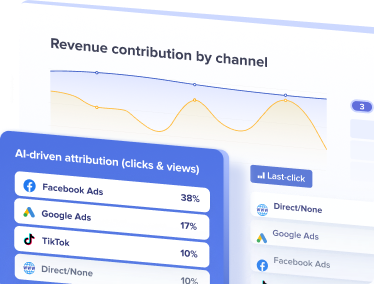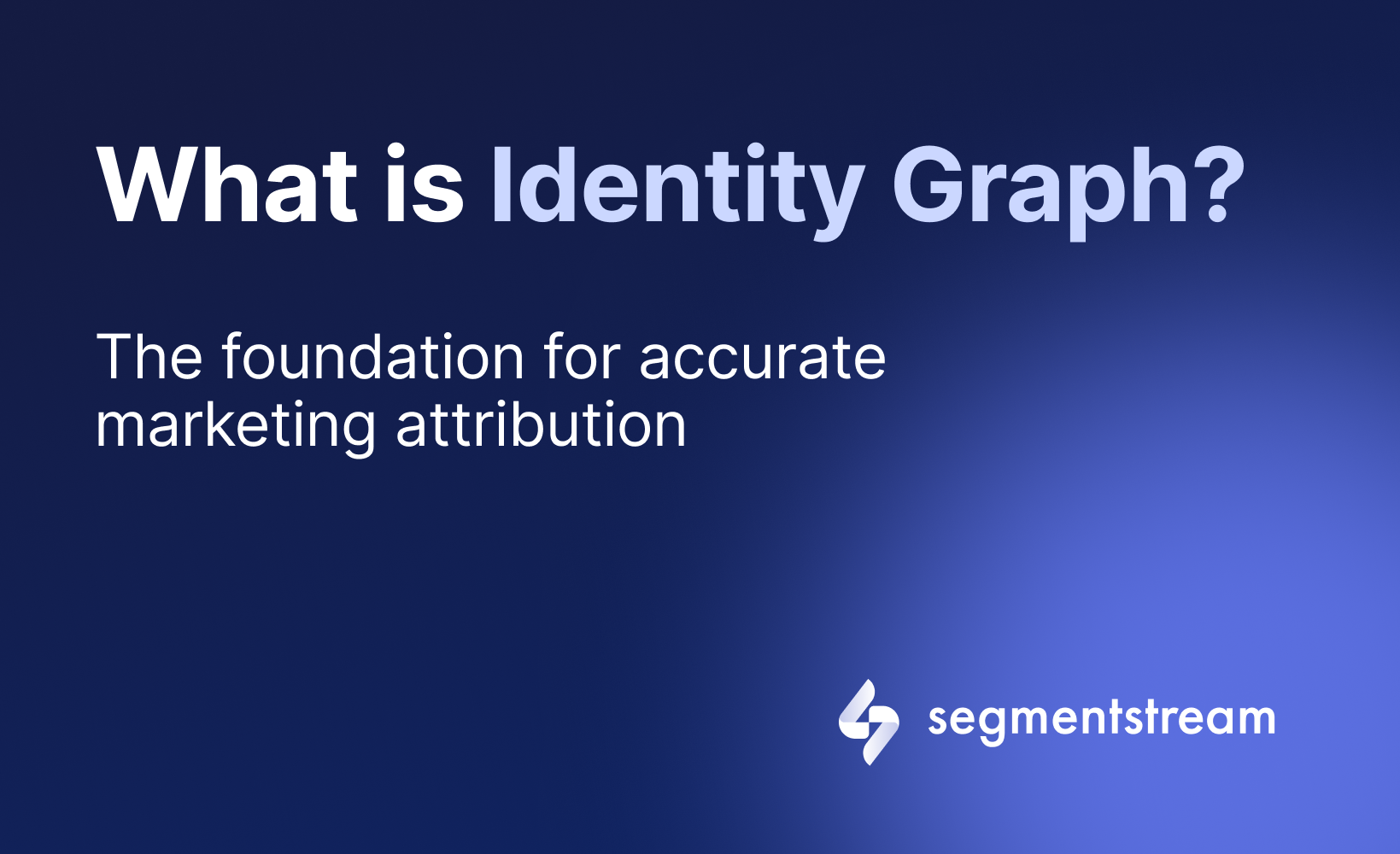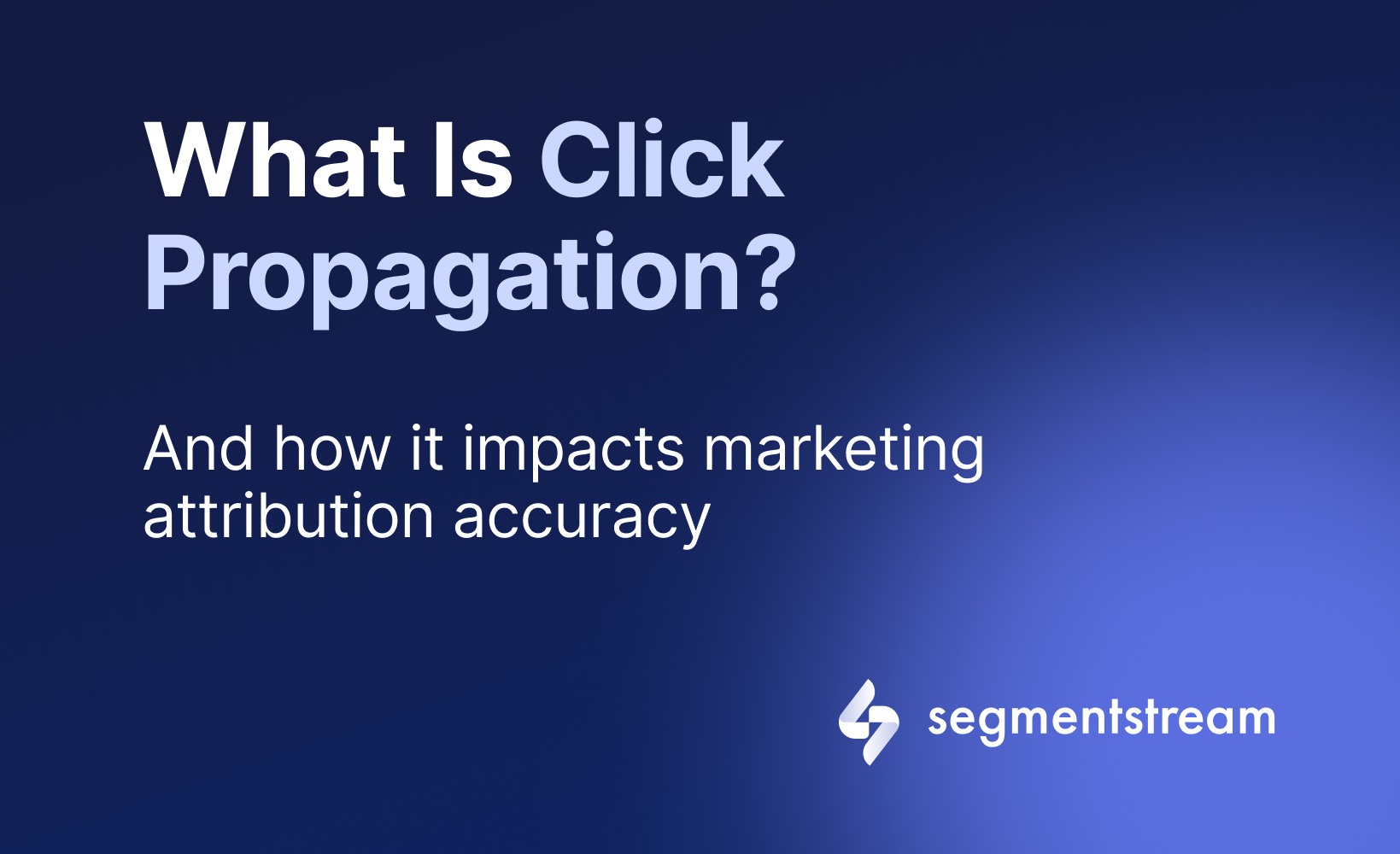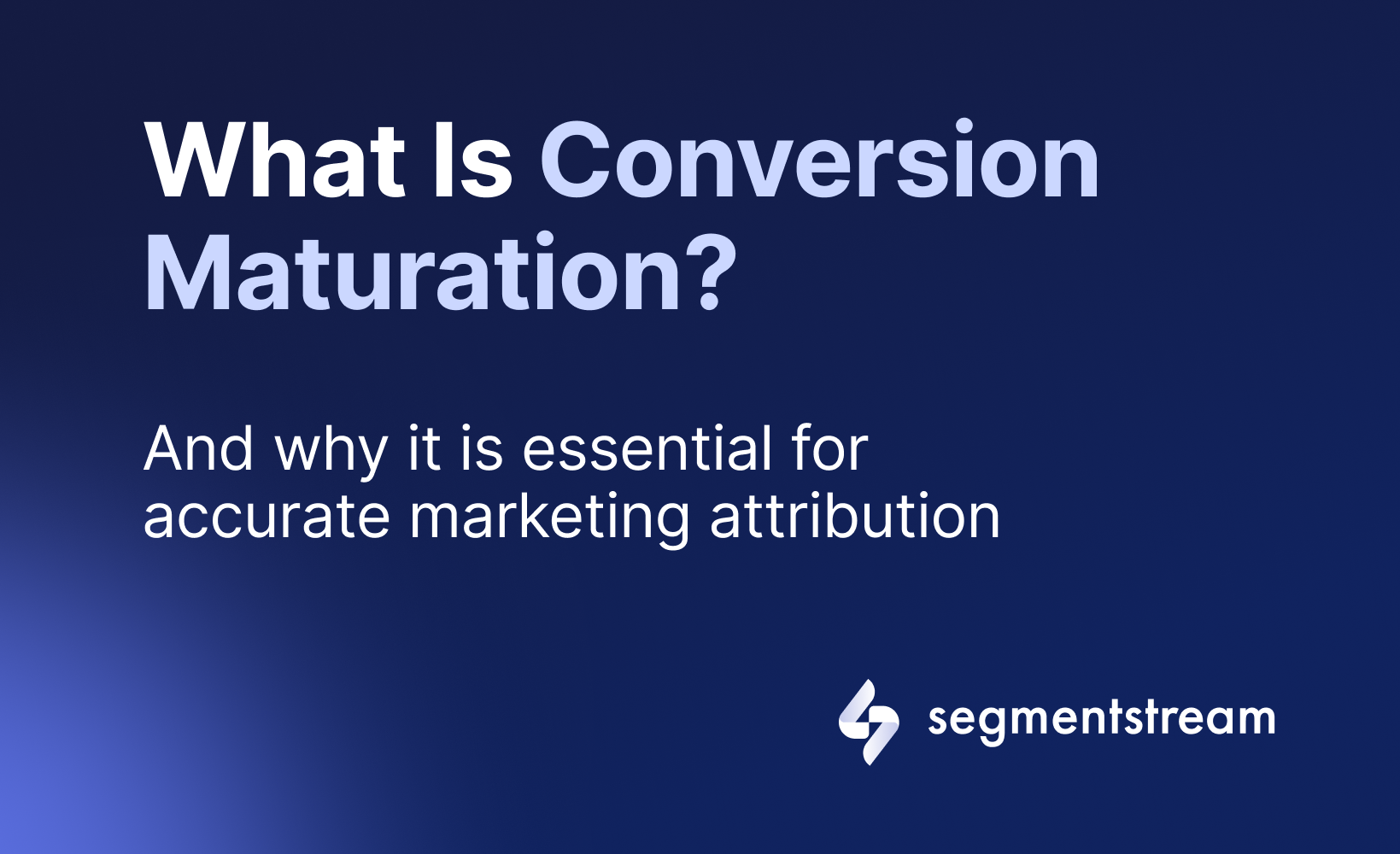
Marketing attribution: common challenges and how to overcome them

Marketing attribution is a crucial aspect of any marketing strategy as it helps identify the most effective marketing channels, campaigns, and touchpoints that lead to conversions. But most importantly, it helps to calculate their value.
However, there are various marketing attribution challenges that marketers face nowadays. Since we’re living in the cookieless world which includes tracking restrictions and cookie use regulations, marketing attribution abilities are limited.
In this article, we will discuss three main challenges of attribution for modern marketers, which are:
- inability to observe the whole customer journey due to cross-browser journeys;
- tracking restrictions and cookie use limitations;
- difficulty in picking the right marketing attribution model.
But don’t get discouraged quickly — we have a couple of solutions as well. Read on!
Top 3 marketing attribution challenges
There are the top three challenges with marketing attribution that bother modern marketers the most. All of them are somehow caused by data regulations, which we will discuss further.
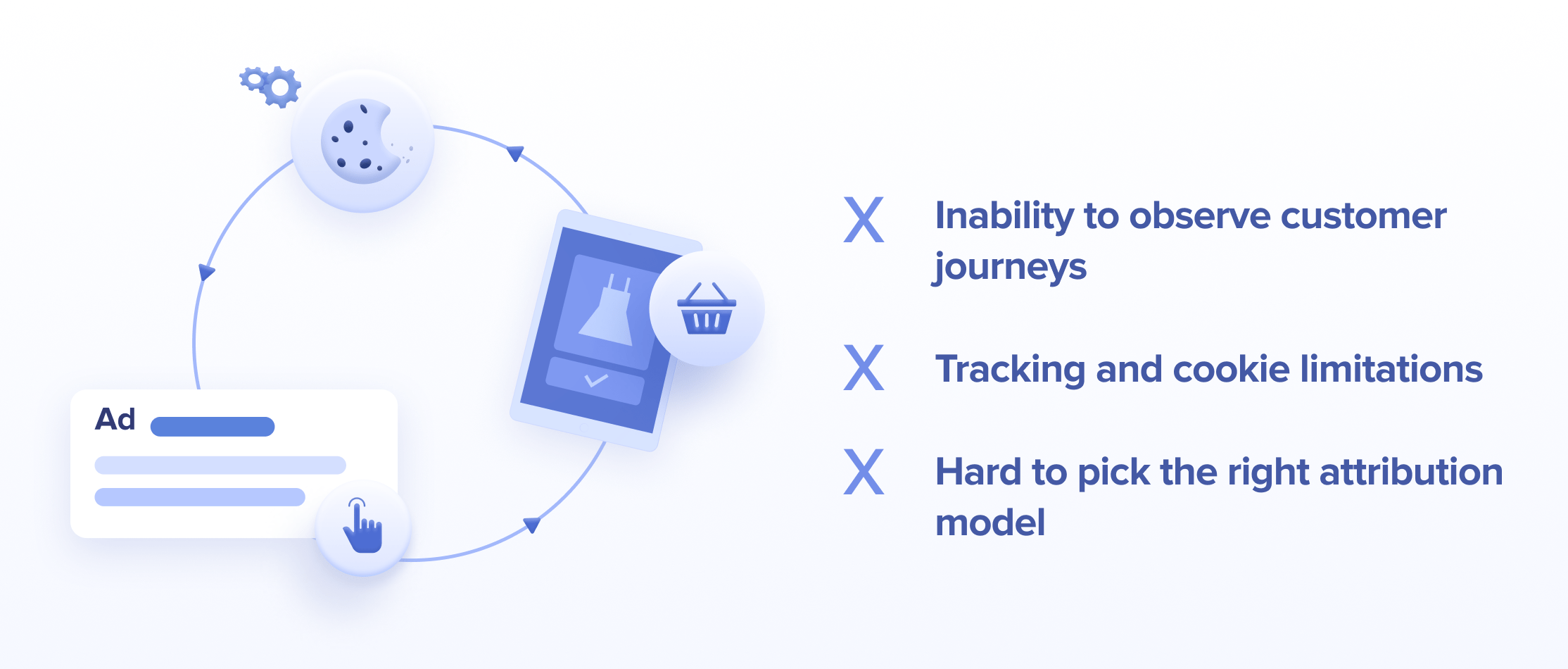
Inability to observe the whole customer journey
The attempts to observe the complete customer journey from the first touchpoint to the conversion is a futile task in today’s privacy-centric digital environment.
A typical user journey involves multiple devices and time breaks between visits. Even when trying to complete the same task, such as shopping for travel deals, users normally switch between multiple devices.
For example, the user sees a Facebook ad on their smartphone, clicks on it, and decides to postpone the buying decision until a payday. On a payday, the user just enters the website’s URL directly into an address bar on a laptop. As a result, all credit is assigned to the direct website visit.
What about the initial Facebook ad that had probably the greatest impact on the final conversion? It gets no credit at all, which is a total undervaluing of organic channels and the first steps in the user journey.
Why does this happen?
Cross-device and cross-browser journeys are a huge issue for marketers trying to observe the whole customer journey. Linking multiple sessions from different devices to a single customer who has converted can be either extremely difficult or even impossible.
When users switch between devices without logging in, it becomes difficult to track them. As a result, if a user visits a website multiple times from different devices, the customer journey is perceived as multiple separate sessions. Therefore, it’s impossible to determine which channels are actually driving conversions.
Tracking restrictions and cookie use limitations
The need for privacy-focused measures has become increasingly important in the digital age where data is being collected, analysed, and used for various purposes. In recent years, companies like Apple, Mozilla, and Google have taken measures to protect user privacy by introducing new features and technologies.
Apple, for instance, released the Intelligent Tracking Prevention (ITP) framework in Safari in 2017 — a feature that blocks cross-site tracking by automatically blocking third-party cookies and limiting the lifespan of first-party cookies. This means that users are less likely to be tracked by advertisers across different websites.
Most browsers limit the lifespan of first-party cookies to a certain period, typically around 7-30 days, after which they expire and get deleted automatically. This is to prevent long-term tracking of users’ browsing activities and protect their privacy. For instance, Safari sets a default lifespan of 7 days for all first-party cookies, while Chrome and Firefox allow cookies to persist for up to 30 days by default.
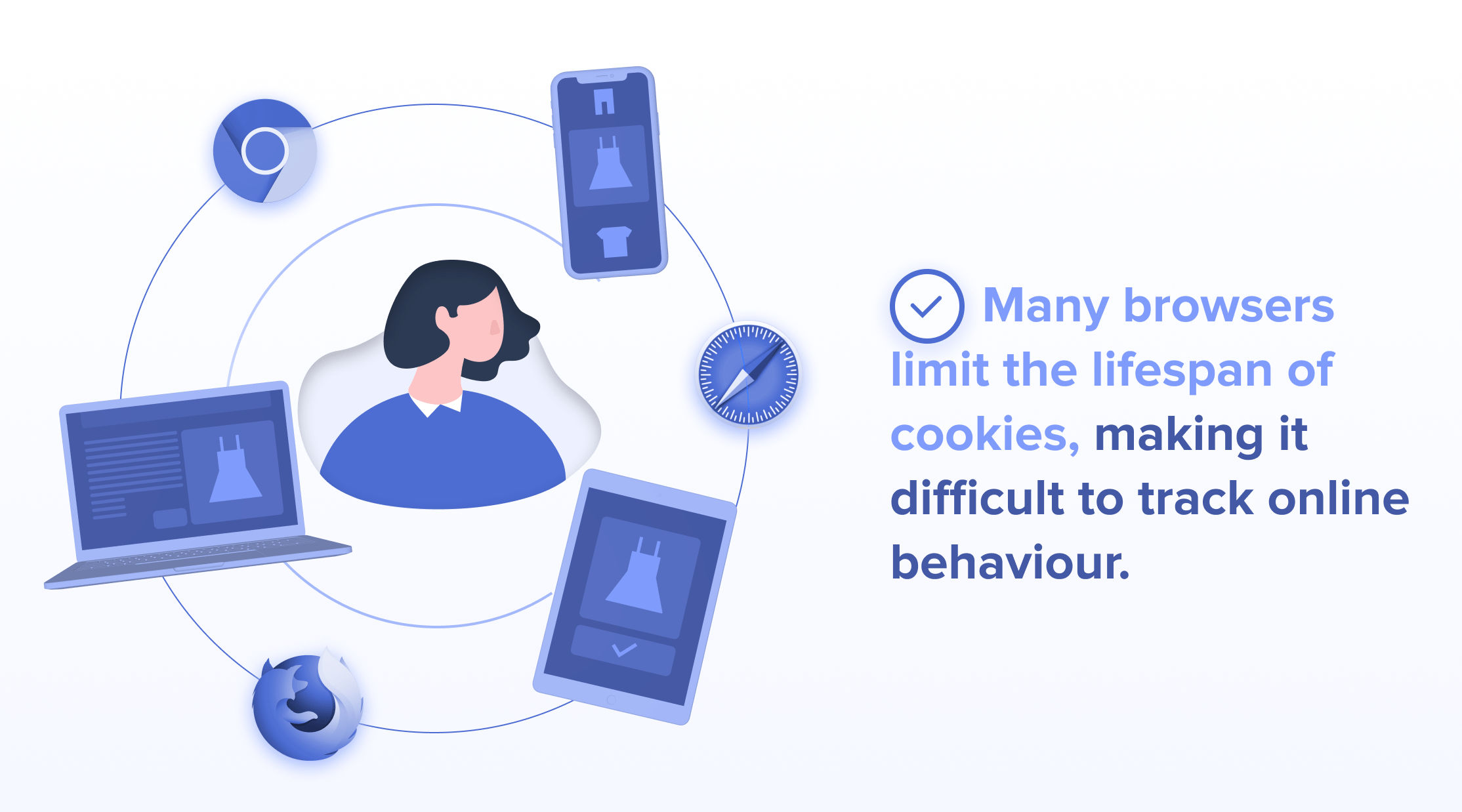
Browsers also limit the amount of data that a first-party cookie can store on a user’s device, usually to a few kilobytes or less, to prevent websites from overloading users’ devices with excessive data. For example, Chrome allows first-party cookies to store up to 4kb of data per domain, while Firefox sets a limit of 5kb.
Challenging to pick the right marketing attribution model
Another challenge marketers face is choosing the right marketing attribution model.
There are multiple options to choose from:
- Single-touch attribution models that tend to find “the one” touchpoint that had the most significant impact on the conversion, be it just the last click, last paid click, etc.
- Multi-touch attribution models that tend to track multiple touchpoints in the users’ journey and assign credit to those that affected the final conversion following a particular rule, including data-driven models that take into account all data about how the customers interact with ads or websites.
They rely on cookies heavily to track user behaviour across different touchpoints. However, as you already know, cookie use is limited due to privacy regulations, tracking restrictions, and user preferences. As a result, the majority of attribution models may not deliver accurate results, making it difficult for marketers to choose the right model.
For example, a multi-touch attribution model may assign credit to multiple touchpoints along the customer journey, such as a display ad, a website visit, and a search ad. However, because of tracking restrictions, the model may not accurately reflect how each touchpoint impacted the customer’s decision to make a purchase. This can make it difficult to choose the right attribution model, as different models may deliver similar results due to limited data availability.
Even the most sophisticated multi-touch attribution models may deliver similar results to single-touch attribution models.
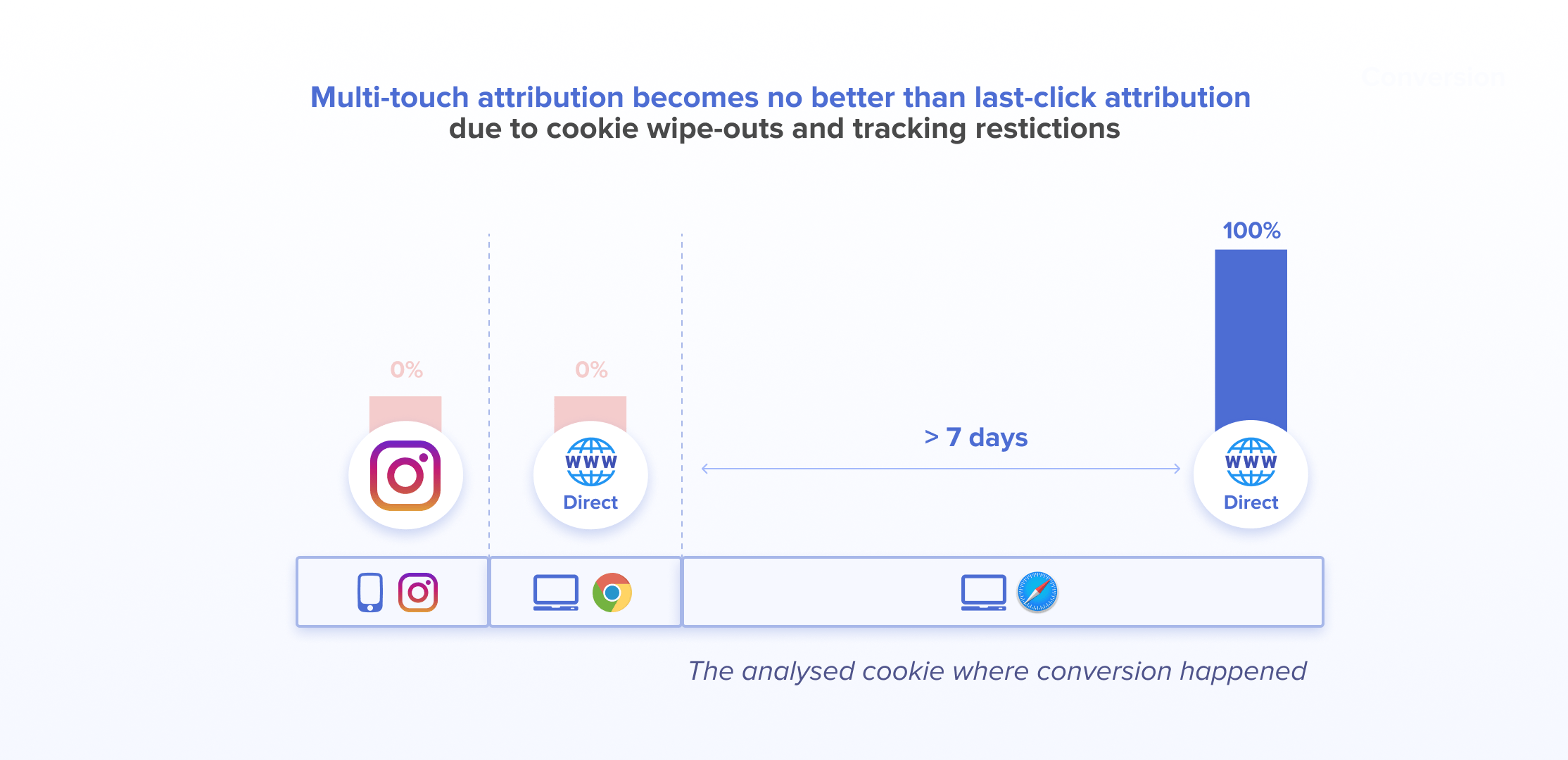
However, there are still ways for marketing professionals to overcome these marketing attribution challenges and be able to obtain valuable insights into how marketing efforts impact business outcomes.
How to solve marketing attribution challenges?
Despite that all these challenges are really harsh on marketers, there are still some ways to overcome them.
Understand the biggest misconception about attribution…
The first step to solving all these challenges is understanding the biggest misconception about marketing attribution that most marketers believe in — a traffic source should only receive value for a single conversion it contributed to.
This belief makes marketers chase every step of a customer’s journey, which is impossible due to all challenges we’ve discussed above. These marketers want to understand which traffic sources or touchpoints a user interacted with before converting so they can distribute the value from this conversion accordingly.
But no matter which attribution model is used, whether it’s a simple one-touch model or a sophisticated data-driven model, none can assign value to traffic sources they simply can’t see.
As a result, marketers are exploring alternative approaches to measuring the impact of each advertising traffic source, in order to get better visibility into channels’ value and gain actionable marketing insights.
Let’s take a look at these alternatives and see whether they solve the challenges of marketing attribution.
…and try alternative approaches to marketing attribution
Predictive attribution, Marketing Mix Modelling, and Incrementality Testing are among the most commonly used alternative methods for measuring the impact of advertising traffic sources.
Introducing SegmentStream’s attribution and optimization solution
SegmentStream combines MMM with predictive techniques.
It examines the relationship between various factors like ad spend, clicks, website visits (including user behavior), and total sales within the same region or country.
This analysis helps in identifying the actual impact of different marketing channels and campaigns on overall revenue; even when conversions cannot be directly attributed using cookies.
How it’s different from cookie-based attribution tools:
While traditional models rely on cookies or login data and wait for the conversion to happen to perform a retrospective analysis, SegmentStream analyzes a wide range of data from clicks, impressions and costs to behaviour trends, moving away from user-based analytics to a privacy-focused approach.
This approach guarantees that each traffic source gets the value it deserves, even if the real conversion happens from another device, browser, or cookie.
AI-driven optimization:
To translate insights into tangible actions, SegmentStream offers a Marketing Mix Optimization tool. This solution provides specific recommendations on how to adjust the budget for each campaign to achieve the most effective marketing mix, ensuring optimal resource allocation and maximizing campaign ROI.
Key takeaways
While marketing attribution challenges can be daunting, there are ways for marketing professionals to overcome them and obtain valuable insights into how their marketing efforts impact business outcomes.
By understanding the biggest misconception about marketing attribution, marketers can finally start looking for alternative solutions to all attribution challenges. For example, in the cookieless world where retrospective attribution is no longer effective, marketers can use alternative approaches that evaluate website sessions for maximum efficiency.
By using SegmentStream instead of relying on underperforming traditional attribution models, marketers can not only see the true value of their efforts but also get actionable recommendations for maximized ROAS.
Optimal marketing
Achieve the most optimal marketing mix with SegmentStream
Talk to expert